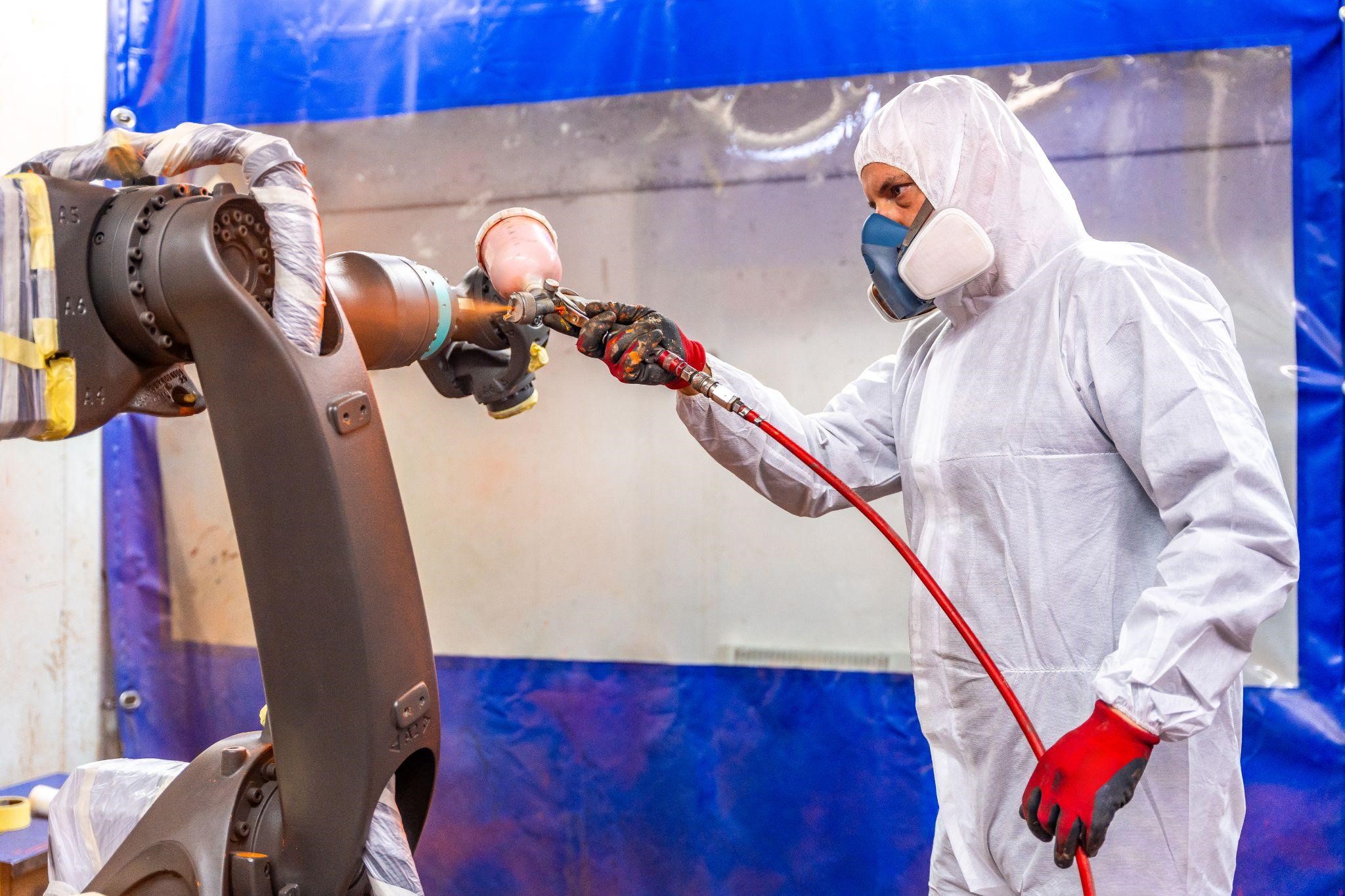A Closer Look at the Differences Between Thermoplastic and Thermoset Powder Coatings
When it comes to powder coatings, there are two major players in the market: thermoplastic and thermoset. But what sets them apart? Are they interchangeable or is there a significant difference that needs to be unraveled? In this article, we take a closer look at thermoplastic and thermoset powder coatings to understand their differences and choose the right one for your application.
Often used in industries like automotive, aerospace, and architectural, powder coatings offer durability, impact resistance, and vibrant color options. But the key lies in choosing the correct type of coating for your specific needs. That’s where the experts at Quality Linings & Painting come in.
Reading our guide to understand the differences between thermoplastic and thermoset powder coatings will empower you to select the most suitable option for your project. So, let's dive in and explore these two contenders, their properties, and their applications in more detail.
Understanding Thermoplastic Powder Coatings
Thermoplastic powder coatings are composed of polymer resins that have a unique characteristic – they can melt and harden repeatedly when exposed to heat or cooled. This reversible process allows for easy reprocessing, making them an excellent choice for applications that require recyclability and flexibility.
One of the major advantages of thermoplastic powder coatings is their ability to be melted and reshaped multiple times without any significant degradation in performance, which makes them highly versatile and cost-effective. Additionally, the absence of chemical crosslinking in thermoplastic coatings allows them to be easily repaired or modified, making them a convenient option for maintenance and touch-ups.
As with many powder coatings, thermoplastic coatings offer excellent adhesion properties, ensuring a strong bond to the substrate. Their flexibility also makes them resistant to cracking, chipping, and peeling, making them suitable for applications that undergo frequent impact or bending stresses. Moreover, thermoplastic coatings exhibit good resistance to chemical substances and UV radiation, enhancing both their durability and longevity.
Applications of thermoplastic powder coatings span across various industries. In the automotive sector, they are widely used for coating vehicle parts, such as bumpers, grills, and interior components, due to their impact resistance and vibrant color options. In the architectural field, thermoplastic coatings find application in window frames, fences, and outdoor furniture, as they can withstand harsh weather conditions and provide an attractive finish.
Exploring Thermoset Powder Coatings
Unlike thermoplastic powder coatings, thermoset powder coatings chemically crosslink when exposed to heat, forming a more rigid and durable finish. This irreversible process makes them ideal for applications that demand resistance to chemical substances, UV radiation, and temperature fluctuations.
One of the key advantages of thermoset powder coatings is their excellent resistance to a wide range of chemicals, including solvents, acids, and alkalis. This chemical resistance ensures that the coating remains intact even in harsh environments, protecting the substrate from corrosion and other forms of degradation. Additionally, thermoset coatings offer superior UV resistance, making them suitable for outdoor applications that are exposed to intense sunlight.
Thermosetting powder coatings provide a hard and durable finish that is less prone to chipping, cracking, and peeling compared to thermoplastic coatings. This makes them a preferred choice for applications that undergo heavy wear and tear or require a high level of durability, such as industrial equipment, machinery, and outdoor structures.
Furthermore, thermoset coatings have excellent heat resistance, allowing them to withstand high temperatures without losing their structural integrity. This property makes them suitable for applications that are exposed to extreme heat or temperature fluctuations, such as exhaust systems, ovens, and engine components.
The wide range of applications for this type of powder coating includes the aerospace industry, where they are used for coating aircraft components, such as landing gear, engine parts, and structural elements. They are also extensively used in the appliance industry for coating household products like refrigerators, ovens, and washing machines, providing both protection and an aesthetically pleasing appearance.
Key Differences Between Thermoplastic and Thermoset Powder Coatings
While both thermoplastic and thermoset powder coatings offer numerous advantages, there are key differences that set them apart. Understanding these differences is crucial in selecting the most suitable option for your project.
The first major difference lies in their ability to be reprocessed. Thermoplastic coatings can be melted and reshaped multiple times without degradation, allowing for easy reprocessing and modifications. On the other hand, thermoset coatings undergo irreversible chemical crosslinking, making them difficult to reprocess or modify once applied.
Another differentiating factor is their resistance to heat. Thermoplastic coatings have a lower heat resistance compared to thermoset coatings. While thermoplastic coatings can withstand moderate temperatures without losing their structural integrity, they may soften or melt at higher temperatures. Thermoset coatings, on the other hand, have excellent heat resistance, allowing them to withstand high temperatures without degradation and therefore making them safer to apply.
Chemical resistance is also a key difference between the two types of coatings. Thermoplastic coatings offer good resistance to a wide range of chemicals, making them suitable for many applications. However, thermoset coatings provide superior chemical resistance, ensuring protection against harsh chemicals, solvents, and acids.
Additionally, their application processes differ. Thermoplastic coatings are typically applied using electrostatic spray or fluidized bed methods. In contrast, thermoset coatings are applied using electrostatic spray or fluidized bed methods, followed by a curing process that involves heating the coated object to a specific temperature to initiate the crosslinking reaction.
Factors to Consider When Choosing Between Thermoplastic and Thermoset Powder Coatings
When deciding between thermoplastic and thermoset powder coatings for your project, several factors need to be considered. These include the specific application requirements, desired performance characteristics, durability needs, and budget constraints.
If your project requires easy reprocessing, recyclability, and flexibility, thermoplastic is the way to go. They are ideal for applications that undergo frequent modifications, repairs, or touch-ups. Thermoplastic coatings are also suitable for projects that require resistance to impact and bending stresses, as well as vibrant color options.
On the other hand, if your project demands superior chemical resistance, UV resistance, and durability, thermoset is the better choice. They offer excellent protection against harsh chemicals, solvents, and acids, making them suitable for applications in a variety of industries like aerospace, automotive, and appliances. Thermoset coatings are also preferred for projects that require resistance to extreme temperatures and heavy wear and tear.
Budget considerations are also important. Thermoplastic coatings are generally more cost-effective compared to thermoset coatings, making them a suitable option for projects with tighter budgets. However, it is essential to carefully evaluate the specific requirements of your project to ensure that the chosen coating meets the necessary performance standards.
Let Us Help You Make the Right Choice for Your Project
Thermoplastic and thermoset powder coatings are two major contenders in the powder coating market, each offering unique advantages and properties. Understanding the differences between these two types of coatings is crucial in selecting the most suitable option for your project.
When choosing between thermoplastic and thermoset powder coatings, factors such as specific application requirements, desired performance characteristics, durability needs, and budget constraints should be carefully considered. By doing so, you can ensure that your project receives the right coating that meets both functional and aesthetic requirements.
Let Quality Linings & Painting help you make the right choice for your application needs. Feel free to fill out our contact form to get in touch with us, or call (303) 307-1313.
Thank you for reading!





